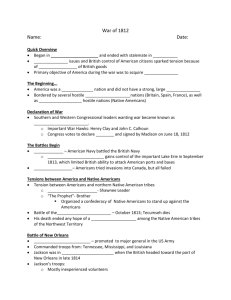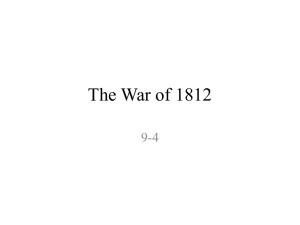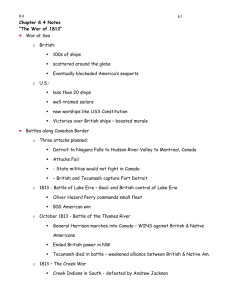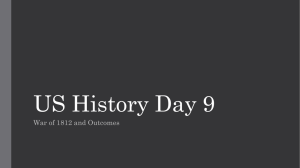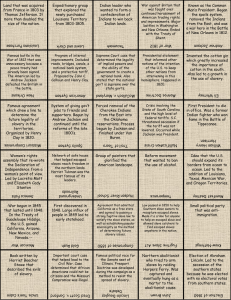Battle of New Orleans PowerPoint
advertisement
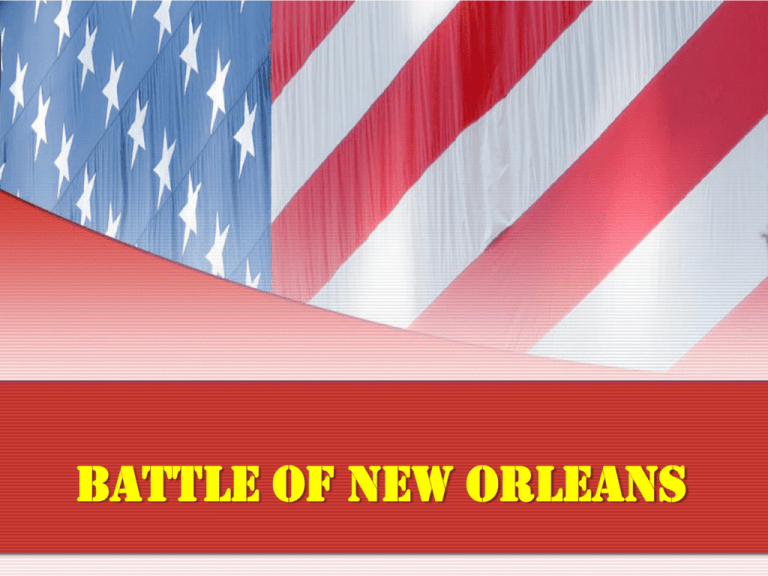
Battle of New Orleans Battle of New Orleans The War of 1812, is often called the second war for American Independence. It began in 1812 and ended in 1815. On June 18, 1812, the United States stunned the world by declaring war on Great Britain. One cause of the War of 1812 was the British disregard of American shipping rights. Between 1808 and 1811 over 6,000 Americans were impressed by the British. British ships frequently stopped American ships, confiscated their cargo, and impressed (captured) crew members, claiming they were deserters from Britain’s Royal Navy. Battle of New Orleans By the time the Battle of New Orleans was fought, many other battles had taken place. The Battle of New Orleans was the last in a series of battles. The first part of the New Orleans battle occurred when the British fleet approached the city through Lake Borgne. The British won the first battle, but their progression toward New Orleans did slow down. Battle of New Orleans Andrew Jackson was a strict officer but was popular with his troops. It was said he was "tough as old hickory" wood on the battlefield, which gave him his nickname, “Old Hickory.” When British forces threatened New Orleans, Jackson took command of the defenses, including militia from several western states and territories. Across the lake, the British army then started for New Orleans. Andrew Jackson planned a night attack that surprised the British. That also slowed the British. Battle of New Orleans By this time, the British General had decided to attack again. They attacked twice, but American troops under the leadership of Andrew Jackson, American soldiers held their ground. On January 8, 1815, both armies met south of New Orleans on the plains of Chalmette. The battle took place on a foggy morning and lasted less than one hour. Battle of New Orleans British Major-General Edward Pakenham ordered assaults against Jackson's position. The first assault was to place a small force on the west bank of the Mississippi. The second was the main attack in three columns directly against the earthworks manned by the vast majority of American troops. In the Battle of New Orleans on January 8, 1815, Jackson's 5,000 soldiers won a victory over 7,500 British. The British had more than 2,000 casualties to Jackson's 8 killed and 58 wounded or missing. Battle of New Orleans Ironically, what Jackson nor British Major-General Edward Pakenham did not know was that the war was already over. On December 24, 1814, a treaty ending the war was already over. However news of “Treaty of Ghent” did not arrive in the United States until two weeks later. Sadly, this battle could have been avoided. British Major-General Edward Pakenham died in the Battle of New Orleans. His body was shipped home to England in a hogshead barrel of rum. He was buried on his estate in England. However, the victory was not considered meaningless. The British had been shown that Americans would not back down, even when it dealt with fighting the world’s most powerful nation at that time. Battle of New Orleans The War of 1812 finally settled the conflict between America and England once and for all. Following the Battle of New Orleans, the 4th of July celebrations had new meaning. The Battle had brought together Louisiana citizens for an American cause. Battle of New Orleans The Battle of New Orleans made General Andrew Jackson a hero. A statue of Jackson was built in New Orleans to honor him. The statue stands in Jackson Square. The statue, was cast from a cannon used in the battle. The statue was completed in 1856. Hero Andrew Jackson was elected President of the United States. He was the nation’s 7th President and served from March 4, 1829 – March 4, 1837. THE END Photos from download.freepics.com and Wikipedia

